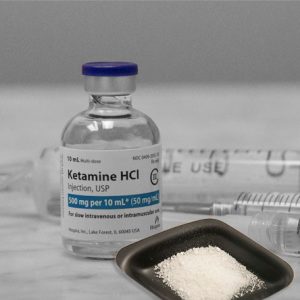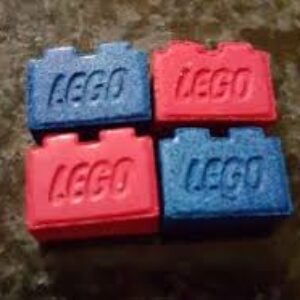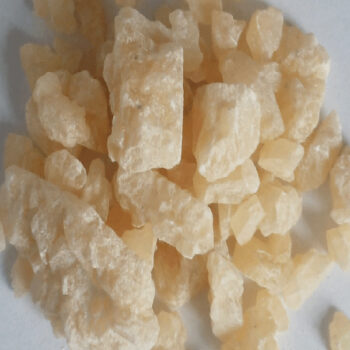Ketamine HCl
$200.00
120 in stock
Ketamine HCL: For Pain Management/Treatment-Resistant Depression/Anesthesia.
Description:
Ketamine HCl (Hydrochloride) is a versatile medication with a complex profile, utilized in both medical and recreational contexts. Initially developed as an anesthetic, its unique properties have led to a range of applications and concerns.
What is Ketamine HCl?
Ketamine HCl is the hydrochloride salt form of ketamine, a synthetic derivative of cyclohexanone. It functions primarily as an NMDA receptor antagonist, producing anesthetic and analgesic effects. Developed in the 1960s as a safer alternative to phencyclidine (PCP), ketamine has been widely used in both human and veterinary medicine.

How is Ketamine HCl Used Medically?
Medically, ketamine serves several purposes:
• Anesthesia: Ketamine is FDA-approved as a general anesthetic, either alone or in combination with other medications.
• Pain Management: It is utilized for its analgesic properties, particularly in situations where other pain relief methods are inadequate.
• Treatment-Resistant Depression: Off-label, ketamine has been explored as a treatment for depression, especially in cases unresponsive to conventional therapies.
What are the Side Effects of Ketamine HCl?
Common side effects include nausea, vomiting, dizziness, diplopia (double vision), drowsiness, and dysphoria (a state of unease or dissatisfaction). In some cases, it can cause temporary changes in blood pressure and heart rate, and may lead to an irregular heartbeat.
Is Ketamine HCl Addictive?
Yes, ketamine has the potential for abuse and addiction. Its dissociative and hallucinogenic effects make it a substance of misuse, leading to psychological dependence in some individuals.
How is Ketamine Abused Recreationally?
Recreationally, ketamine is used for its ability to produce dissociative sensations and hallucinations. It is often referred to as a “club drug” and is sometimes used to facilitate sexual assault due to its sedative properties.
What are the Risks of Recreational Ketamine Use?
Recreational use of ketamine carries significant risks, including:
• Physical Health Issues: Long-term use can lead to severe health problems such as bladder dysfunction and cognitive impairments.
• Addiction: Regular use can result in psychological dependence.
• Legal Consequences: Ketamine is a controlled substance, and unauthorized use is illegal.
Can Ketamine be Used for Depression Treatment?
Yes, ketamine has been explored as a treatment for depression, particularly in individuals with treatment-resistant depression. Its rapid-acting antidepressant effects have been the subject of clinical research.

What is the Legal Status of Ketamine?
Ketamine is classified as a Schedule III controlled substance in the United States, indicating a moderate to low potential for physical and psychological dependence. Its legal status varies by country, with some considering reclassification due to rising misuse.
How Is Ketamine HCL Produced?
The production of ketamine hydrochloride (HCl) involves several chemical synthesis steps, typically conducted in a controlled pharmaceutical manufacturing environment. Here’s a general overview of the process:
1. Synthesis of Ketamine:
– Ketamine is synthesized from specific chemical precursors through a series of reactions. One common method involves the condensation of 2-chlorobenzonitrile with cyclohexylamine, followed by further reactions to achieve the desired ketamine structure.
2. Chemical Reactions:
– The synthesis may include steps such as:
– Formation of Intermediates: The initial reaction produces intermediates that undergo additional transformations.
– Reduction: Some reactions may require reducing agents to convert certain functional groups.
3. Purification:
– After synthesis, the crude ketamine product is purified to remove impurities and by-products. Techniques such as crystallization or chromatography are often used.
4. Conversion to Hydrochloride Salt:
– Ketamine is typically converted to its hydrochloride form by reacting it with hydrochloric acid. This step enhances the solubility of the compound, making it suitable for pharmaceutical formulations.
5. Formulation:
– The purified ketamine hydrochloride is then formulated into final dosage forms, such as injectable solutions or nasal sprays. This step may include mixing with excipients that facilitate stability and delivery.
6. Quality Control:
– Comprehensive quality control tests are performed to ensure the product meets regulatory standards for purity, potency, and safety.
7. Packaging:
– The final product is packaged according to regulatory guidelines, ensuring proper labeling and storage conditions.
The entire process is subject to stringent regulatory standards to ensure the safety and efficacy of the final pharmaceutical product.
Conclusion
Ketamine is a multifaceted drug with significant medical benefits and potential for misuse. Its applications range from anesthesia to emerging treatments for depression, yet its abuse poses serious health and legal risks. Understanding its properties, uses, and associated dangers is crucial for both medical professionals and the general public. Ketamine HCl troche.
Be the first to review “Ketamine HCl” Cancel reply
Related products
Psilocybin Mushrooms
Psilocybin Mushrooms
Psilocybin Edibles
MDMA
Psilocybin Mushrooms
MDMA
MAGIC MUSHROOMS
Psilocybin Mushrooms










1 review for Ketamine HCl
There are no reviews yet.